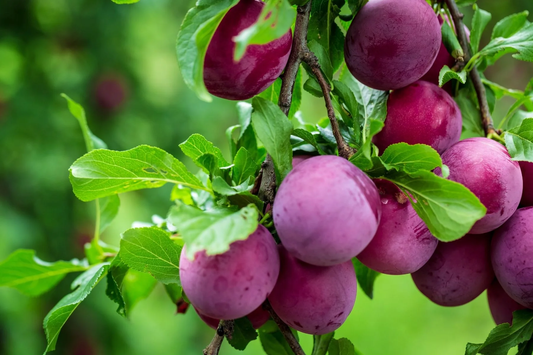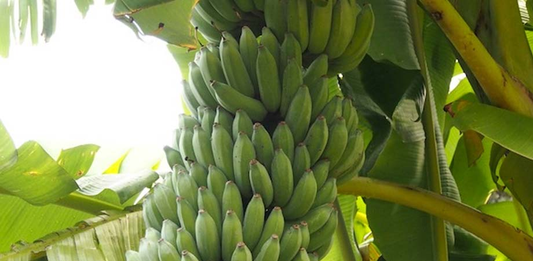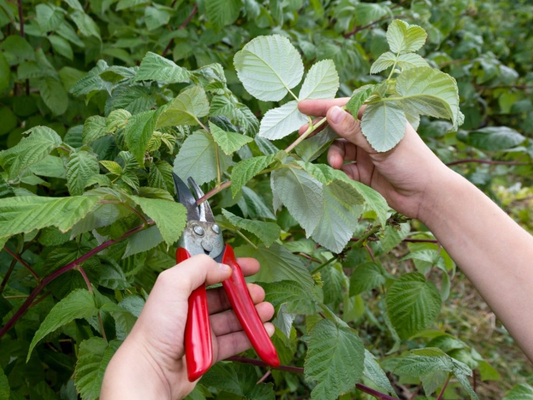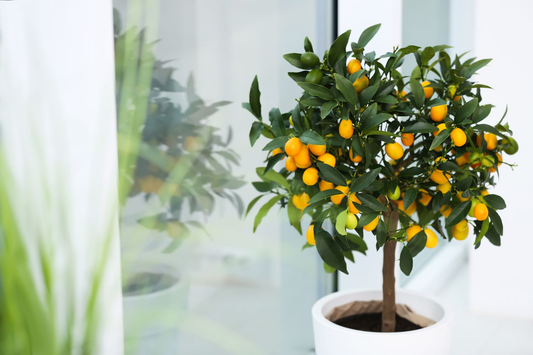Drought-Resistant Plants for Gardens
Share
- 1. Introduction
- 2. What Are Drought-Resistant Plants?
- 3. Benefits of Growing Drought-Resistant Plants in Your Garden
- 4. How to Choose the Right Drought-Resistant Plants for Your Garden
- 5. Best Drought-Resistant Plants for Full Sun
- 6. Best Drought-Resistant Plants for Partial Shade
- 7. Drought-Resistant Ground Covers and Low Maintenance Shrubs
- 8. Drought-Resistant Trees for Your Garden
- 9. Native vs. Non-Native Drought-Resistant Plants: What’s the Difference?
- 10. Care Tips for Drought-Resistant Plants
- 11. Drought-Resistant Plants for Xeriscaping
- 12. Frequently Asked Questions (FAQ)
1. Introduction
As climate change continues to impact weather patterns across the globe, gardeners are increasingly turning to drought-resistant plants to ensure their gardens thrive despite the challenges posed by water scarcity. Drought-resistant plants are a key solution for those looking to create sustainable, low-maintenance gardens that require minimal watering. These plants have adapted to survive with less water, making them ideal for regions experiencing longer dry spells and unpredictable rainfall. Additionally, with growing concerns about the environmental impact of excessive water use, adopting drought-tolerant plants is not only practical but also an eco-friendly choice.
In this blog, we will explore the growing importance of drought-resistant plants in modern gardens, particularly in the context of water conservation and climate change. By choosing the right plants, gardeners can reduce their water usage, lower maintenance costs, and create resilient, attractive landscapes. Here’s what we’ll cover:
- What Are Drought-Resistant Plants? – A breakdown of the characteristics that make plants drought-resistant.
- Benefits of Growing Drought-Resistant Plants – How these plants can conserve water and support sustainable gardening practices.
- How to Choose the Right Drought-Resistant Plants for Your Garden – Tips on selecting the best plants for different garden conditions.
- Best Drought-Resistant Plants for Full Sun and Partial Shade – A guide to the best drought-tolerant plants for various lighting conditions.
- Drought-Resistant Ground Covers, Shrubs, and Trees – Exploring low-maintenance ground covers, shrubs, and trees for drought-prone areas.
- Native vs. Non-Native Drought-Resistant Plants – Understanding the differences and benefits of native and non-native drought-resistant plants.
- Care Tips for Drought-Resistant Plants – Essential tips for maintaining your drought-resistant plants with minimal water.
- Frequently Asked Questions (FAQ) – Answers to common questions about growing and caring for drought-resistant plants.
With water conservation becoming more critical than ever, integrating drought-resistant plants into your garden is a step towards creating a more sustainable and resilient landscape. Whether you live in an area prone to drought or are simply looking to reduce water consumption, this blog will guide you through everything you need to know about drought-resistant gardening.

2. What Are Drought-Resistant Plants?
Drought-resistant plants are those that have adapted to survive in environments with limited water availability. These plants have developed unique physical characteristics and behaviors that help them conserve water and thrive even in arid conditions. While these plants are not "water-free," they are significantly more tolerant of dry conditions compared to traditional garden plants. They are especially useful in regions where water conservation is a priority or where long dry spells are common.
Key Characteristics of Drought-Resistant Plants:
- Deep or Extensive Root Systems: Many drought-resistant plants have deep or widespread root systems that allow them to access water deep in the soil or spread across a large area to find moisture.
- Small or Modified Leaves: To reduce water loss, some drought-resistant plants have small leaves, waxy coatings, or needle-like leaves that minimize evaporation.
- Succulent Tissues: Some plants store water in their tissues, such as cactus or aloe vera, which allows them to withstand dry periods.
- Water-Conserving Processes: Many drought-tolerant plants employ a process called crassulacean acid metabolism (CAM), which allows them to photosynthesize during cooler, more humid times of the day or night to reduce water loss.
How Drought-Resistant Plants Conserve Water:
- Root Systems: As mentioned, deep and extensive roots are one of the primary adaptations. By growing long roots, drought-resistant plants can tap into underground water reserves that are unavailable to shallow-rooted plants.
- Leaf Structures: Some drought-resistant plants have thick, leathery leaves that trap moisture inside. Others may have a coating of tiny hairs or wax on their leaves to prevent water loss.
- Efficient Photosynthesis: Drought-resistant plants may open their stomata (the pores in leaves) only at night to reduce water loss during the hotter parts of the day. This helps them maintain water without sacrificing photosynthesis.
Common Misconceptions About Drought-Resistant Plants:
- Drought-Resistant Plants Don’t Need Water: While drought-resistant plants can survive longer periods without water, they still need some water to thrive. These plants are not "water-free" but rather more water-efficient.
- Low Maintenance Means No Maintenance: Many people assume that drought-resistant plants require no care at all. While they do need less frequent watering, they still require proper planting, occasional pruning, and attention to soil health.
- All Drought-Resistant Plants Are the Same: Different drought-resistant plants have varying levels of drought tolerance, and some may be more suited to specific climates, soils, or lighting conditions.
3. Benefits of Growing Drought-Resistant Plants in Your Garden
Growing drought-resistant plants in your garden offers numerous benefits, from conserving water to supporting local wildlife. As climate change makes water more scarce in some regions, incorporating these resilient plants into your landscape can have a significant positive impact. Below, we explore the key benefits of adding drought-resistant plants to your garden:
- Water Conservation: Drought-resistant plants are designed to thrive with minimal water. By choosing these plants for your garden, you can significantly reduce the amount of water needed for irrigation. This not only conserves water but also ensures that your garden can withstand dry spells or periods of water restrictions without sacrificing its beauty or health.
- Environmental Impact: Drought-resistant plants help promote sustainable gardening practices. By reducing water consumption and minimizing the need for chemical fertilizers and pesticides, these plants contribute to the overall health of the ecosystem. Water conservation reduces strain on local water sources, and choosing native drought-tolerant species can support local biodiversity.
- Reduced Maintenance: One of the most appealing benefits of drought-resistant plants is their low-maintenance nature. These plants require less frequent watering, trimming, and care compared to traditional garden plants. Their resilience makes them ideal for busy gardeners or those who prefer a more hands-off approach to landscaping.
- Economic Benefits: As water bills continue to rise, switching to drought-resistant plants can help lower your overall water consumption. Less frequent irrigation leads to lower water usage, which can translate to significant savings on water bills. Additionally, these plants often require fewer fertilizers and pesticides, further reducing ongoing maintenance costs.
- Enhancing Biodiversity: Drought-resistant plants can help improve biodiversity in your garden. Many drought-tolerant species are also native plants, which are crucial for supporting local wildlife, including pollinators like bees, butterflies, and hummingbirds. These plants provide essential food and shelter for beneficial insects and animals, promoting a healthier garden ecosystem.

4. How to Choose the Right Drought-Resistant Plants for Your Garden
Choosing the right drought-resistant plants for your garden involves several factors, from understanding your local climate to considering the size and spread of your plants. With careful selection, you can ensure that your garden thrives while conserving water and supporting sustainable practices. Below are the key considerations when choosing drought-resistant plants:
- Climate Considerations: The first step in selecting drought-resistant plants is understanding your regional climate. Different plants thrive in various climate zones, so it’s important to choose species that are well-suited to your area's temperature and rainfall patterns. Consider whether your region experiences hot summers, mild winters, or seasonal rainfall. Additionally, opting for native plants can be a great choice, as they are naturally adapted to your local climate conditions.
- Soil Type and Drainage: Soil type plays a significant role in how well drought-resistant plants will grow. Sandy soils drain quickly but may not retain moisture, while clay soils retain water but can become compacted and impede root growth. Be sure to assess your garden's soil and consider plants that match your soil type. Improving soil drainage with organic matter or mulch can also help maintain the right moisture levels for your plants.
- Sunlight Exposure: Different drought-resistant plants have different sunlight requirements. Some plants thrive in full sun, while others prefer partial or full shade. Before selecting your plants, observe your garden to determine areas that receive direct sunlight, and those that are shaded for part of the day. Make sure to choose plants that are suitable for the sunlight conditions in each area of your garden.
- Plant Size and Spread: Understanding the growth habits of plants is essential for creating a well-designed garden layout. Some drought-resistant plants spread quickly and may need more space, while others remain compact. Consider the mature size of the plant and how it will fit into your garden's overall design. Plan for adequate spacing between plants to avoid overcrowding and to allow for healthy growth.
- Aesthetic and Functional Value: Drought-resistant plants not only save water but can also enhance your garden's beauty and functionality. When selecting plants, think about the visual appeal of the flowers, foliage, and colors. Combine beauty with function by choosing plants that provide seasonal interest, create focal points, or offer habitat for beneficial wildlife such as pollinators and birds.
5. Best Drought-Resistant Plants for Full Sun
When selecting drought-resistant plants for a full-sun garden, it's important to choose species that can thrive under intense sunlight and withstand dry conditions. Full-sun plants generally require at least six hours of direct sunlight each day, so it's essential to select plants that can tolerate both the heat and the minimal water availability. Below are some of the best drought-resistant plants for full-sun gardens:
- Agave: Known for its striking, spiky leaves, agave is an excellent choice for full-sun, low-maintenance gardens. Agave plants are well-suited for hot, dry climates and have thick, fleshy leaves that store water, allowing them to survive with minimal irrigation.
- Lavender: Lavender is not only drought-tolerant but also fragrant and visually appealing. This perennial herb thrives in full sun and well-drained soil, making it a popular choice for gardens that require both beauty and water efficiency.
- Coneflower (Echinacea): Coneflowers are hardy, drought-tolerant plants that produce beautiful, daisy-like flowers. They are native to North America and are known for their vibrant colors and ability to attract pollinators, such as bees and butterflies, to the garden.
- Black-eyed Susan (Rudbeckia): A classic perennial, Black-eyed Susan thrives in full sun and is both drought-tolerant and low-maintenance. Its cheerful yellow flowers make it a favorite in gardens that need a splash of color with minimal upkeep.
Here is a table comparing the pros and cons of these popular full-sun drought-resistant plants:
| Plant | Drought Tolerance | Care Needs | Appearance |
|---|---|---|---|
| Agave | High | Low, requires minimal watering and maintenance | Spiky, architectural foliage with a dramatic appearance |
| Lavender | High | Low, needs well-drained soil and occasional pruning | Fragrant, silvery foliage with purple flowers |
| Coneflower (Echinacea) | Medium-High | Low, occasional watering and deadheading | Bright, daisy-like flowers with a conical center |
| Black-eyed Susan (Rudbeckia) | Medium-High | Low, minimal watering and regular division | Bold, yellow flowers with dark centers, sturdy stems |
Each of these plants is well-suited to full-sun conditions and offers unique benefits for a drought-tolerant garden. When selecting plants, consider their appearance, care needs, and drought tolerance to ensure they complement your garden's overall design.
6. Best Drought-Resistant Plants for Partial Shade
Partial shade is an area of your garden that receives less than six hours of direct sunlight per day, often due to the presence of trees, fences, or buildings. While these conditions may seem challenging for plants, there are several drought-resistant species that thrive in these shaded environments. The key to selecting the right plants for partial shade is finding species that can tolerate lower light levels and still conserve water effectively. Below are some excellent choices for a drought-tolerant, partially shaded garden:
- Hosta: Hostas are well-known for their attractive foliage and ability to thrive in shaded areas. While they can handle moisture, many varieties are also drought-tolerant once established. They are perfect for adding texture and greenery to shaded garden beds.
- Bleeding Heart: Bleeding Heart is a unique perennial that produces delicate, heart-shaped flowers. It thrives in partial shade and is tolerant of dry spells once established. It is an excellent choice for adding a touch of elegance to shady areas.
- Coral Bells (Heuchera): Coral Bells are a great addition to partial shade gardens due to their colorful foliage and ability to withstand dry conditions. These plants are often used for their vibrant leaf colors, which range from deep purple to lime green, adding visual interest to your garden.
- Ferns: Many ferns, such as the Lady Fern or Autumn Fern, are drought-tolerant once their root systems are established. These plants add a lush, tropical look to shaded areas while conserving water and thriving with minimal care.
Here is a table comparing the pros and cons of these drought-resistant plants for partial shade:
| Plant | Drought Tolerance | Size | Growth Pattern |
|---|---|---|---|
| Hosta | Medium | Varies, typically 1-3 feet tall | Clumping, spreading foliage |
| Bleeding Heart | Medium | 1-3 feet tall, 1-2 feet wide | Arching stems with drooping flowers |
| Coral Bells (Heuchera) | High | 12-18 inches tall, 12-24 inches wide | Compact, mounding growth with vibrant foliage |
| Ferns | Medium | Varies, typically 1-3 feet tall | Lush, spreading fronds |
When selecting plants for partial shade, consider their size, growth pattern, and drought tolerance. These plants offer a range of aesthetic options for shaded garden areas, with the added benefit of being water-efficient and low-maintenance once established.

7. Drought-Resistant Ground Covers and Low Maintenance Shrubs
Drought-resistant ground covers and low-maintenance shrubs are excellent additions to water-efficient gardens. Ground covers spread quickly and require minimal care, making them perfect for covering large areas or filling in gaps between other plants. Similarly, drought-resistant shrubs provide structure and greenery with little need for watering once established. Both ground covers and shrubs help conserve water, reduce the need for mulching, and contribute to a more sustainable garden. Below are some of the best drought-tolerant ground covers and shrubs:
Ground Covers
- Creeping Thyme: This fragrant, low-growing herb is perfect for covering ground in sunny areas. Creeping Thyme is highly drought-resistant and requires little maintenance once established. It also attracts pollinators like bees and butterflies.
- Sedum (Stonecrop): Sedum is a hardy succulent that thrives in dry conditions. It is ideal for areas with poor soil and low water availability. Its fleshy leaves store moisture, allowing it to survive dry spells.
Shrubs
- Russian Sage: Known for its tall, silvery stems and purple flowers, Russian Sage is a drought-tolerant shrub that thrives in full sun and dry soil. It requires minimal watering and provides long-lasting color in the garden.
- Juniper: Junipers are tough, evergreen shrubs that can withstand drought once established. They come in various sizes and forms, from low-spreading ground covers to tall, upright varieties.
- Boxwood: Boxwood is a popular evergreen shrub that can tolerate dry conditions once its root system is established. It is often used for hedges or as a foundation plant in water-efficient landscapes.
Below is a table comparing ground covers and shrubs, focusing on their coverage, care, and water needs:
| Plant Type | Coverage | Care Needs | Water Needs |
|---|---|---|---|
| Creeping Thyme | Spreads quickly, ground cover | Low, requires minimal care | Low, very drought-tolerant |
| Sedum (Stonecrop) | Covers ground well, low-growing | Low, needs well-drained soil | Low, thrives in dry soil |
| Russian Sage | Upright shrub with a wide spread | Low, occasional pruning | Medium, tolerates drought |
| Juniper | Varies, from ground cover to upright | Low, very hardy once established | Low, drought-tolerant |
| Boxwood | Moderate coverage, compact growth | Medium, occasional shaping | Medium, drought-tolerant once established |
When choosing between ground covers and shrubs, consider the size of your garden and your aesthetic goals. Ground covers are excellent for filling in large areas quickly, while shrubs provide structure and can serve as focal points in your garden. Both options offer low-maintenance, drought-tolerant solutions for a water-efficient garden.
8. Drought-Resistant Trees for Your Garden
Trees are an essential part of any garden, providing shade, structure, and beauty. Drought-resistant trees are particularly valuable in water-efficient landscapes as they require minimal care once established. These trees contribute to drought resistance in gardens by offering shade that reduces soil moisture evaporation, improving the overall microclimate. Additionally, their deep root systems enable them to access water from lower soil layers, allowing them to survive during dry spells. Below are some excellent drought-tolerant trees for your garden:
- Oak (Quercus species): Oaks are known for their robustness and adaptability. These large trees are perfect for providing shade in larger gardens. While they may take time to establish, they are highly drought-resistant once their roots grow deep into the soil. Oaks also support local wildlife by providing habitat and food sources.
- Honeylocust: The Honeylocust tree is a fast-growing, deciduous tree that thrives in dry conditions. It has a light, airy canopy that allows sunlight to filter through, making it a great option for understory planting. Its drought tolerance and attractive foliage make it a popular choice for water-efficient landscapes.
- Red Maple: Although typically associated with wetland areas, the Red Maple is surprisingly drought-tolerant once established. This tree is known for its stunning fall color and attractive shape. It does best in well-drained soil and can thrive with minimal water once its root system is established.
- Desert Willow: Native to the southwestern United States, the Desert Willow is a small to medium-sized tree that thrives in arid conditions. It produces beautiful trumpet-shaped flowers in the summer and requires very little water once established. It is perfect for hot, dry regions with little rainfall.
Here is a table comparing the pros and cons of these drought-resistant trees, focusing on drought tolerance, height, and growth habits:
| Tree | Drought Tolerance | Height | Growth Habit |
|---|---|---|---|
| Oak (Quercus species) | High | 50-80 feet (varies by species) | Slow-growing, large, canopy-forming |
| Honeylocust | High | 30-70 feet | Fast-growing, light canopy, deciduous |
| Red Maple | Medium | 40-60 feet | Medium growth, round to oval shape |
| Desert Willow | High | 15-30 feet | Small to medium tree, open branching |
When choosing a drought-resistant tree for your garden, consider the size of your space, the amount of sunlight, and your local climate. These trees offer a variety of shapes, sizes, and benefits, from providing shade to attracting wildlife, all while minimizing water usage.

9. Native vs. Non-Native Drought-Resistant Plants: What’s the Difference?
When selecting drought-resistant plants for your garden, one important consideration is whether to choose native or non-native species. Both types can be drought-tolerant, but they have different characteristics and impacts on your garden. Understanding the differences between native and non-native plants can help you make informed decisions about which plants will thrive in your landscape.
- Native Plants: Native plants are species that have naturally evolved in a specific region over time. They are adapted to the local climate, soil, and water conditions, making them well-suited for your area's environment. These plants often have deep root systems that help them survive drought conditions.
- Non-Native Plants: Non-native plants are species that are introduced to a region where they do not naturally occur. While many non-native plants can tolerate dry conditions and provide aesthetic or functional value, they may not be as well adapted to the local environment. Some may require more care to thrive and could become invasive in certain areas.
There are several benefits to using native plants in drought-tolerant gardens:
- Adaptation: Native plants are already adapted to your local climate, so they require less water and maintenance once established.
- Environmental Impact: Native plants support local wildlife by providing habitat and food sources for pollinators and other beneficial species.
- Lower Risk of Invasiveness: Native plants are less likely to become invasive compared to non-native species.
However, non-native drought-tolerant plants can also have benefits, such as providing unique aesthetic qualities or thriving in specific garden designs. Yet, they may present challenges:
- Adaptation Issues: Non-native plants may struggle to adapt to local conditions and may need additional water or care during drought periods.
- Invasiveness: Some non-native plants can spread aggressively and disrupt local ecosystems, outcompeting native plants for resources.
Here is a table comparing the pros and cons of native and non-native drought-resistant plants:
| Plant Type | Pros | Cons |
|---|---|---|
| Native Plants |
|
|
| Non-Native Plants |
|
|
When deciding between native and non-native drought-resistant plants for your garden, consider the local climate, the potential environmental impact, and your gardening goals. Both types of plants can contribute to a water-efficient garden, but choosing native plants can help support the health and balance of your local ecosystem.
10. Care Tips for Drought-Resistant Plants
While drought-resistant plants are naturally adapted to survive with minimal water, providing proper care will help them thrive in your garden. Below are essential care tips to optimize their growth and ensure that they are as resilient as possible during dry periods.
-
Proper Watering Techniques:
- Water deeply and infrequently to encourage deep root growth. Shallow watering promotes weak, surface-level roots.
- Water in the early morning or late evening to minimize water loss due to evaporation.
- Avoid overwatering; drought-resistant plants are adapted to dry conditions and can suffer from waterlogged soil.
-
Optimizing Soil for Water Retention:
- Improve soil drainage by incorporating organic matter like compost, which helps retain moisture while preventing waterlogging.
- Use sandy or loamy soil for plants that need good drainage, but add organic mulch to retain water around the root zone.
- Test soil pH regularly to ensure it is appropriate for your selected drought-tolerant plants.
-
Mulching Techniques:
- Apply a 2-4 inch layer of organic mulch (like bark, straw, or wood chips) around the base of plants to reduce evaporation and keep the soil cool.
- Mulching also helps suppress weeds that compete for water and nutrients.
- Ensure the mulch is not piled directly against the plant’s stems to prevent rot and fungal diseases.
-
Seasonal Care and Adjustments:
- In the cooler months, reduce watering frequency as plants enter dormancy, but monitor for signs of drought stress.
- During periods of extreme heat, consider providing some shade or shelter for young plants until they establish strong roots.
- Regularly trim dead or damaged foliage to maintain airflow and reduce the risk of disease.

11. Drought-Resistant Plants for Xeriscaping
Xeriscaping is a landscaping method designed to reduce water usage and create sustainable, low-maintenance gardens. The goal of xeriscaping is to create a garden that thrives with minimal irrigation, making it an ideal choice for drought-prone areas or those seeking to conserve water. By incorporating drought-resistant plants, xeriscaping reduces reliance on water, promotes environmental sustainability, and creates a beautiful, resilient landscape.
-
What is Xeriscaping?
- Xeriscaping involves using plants that are well-suited to dry conditions and efficient in their water use. It’s designed to minimize water waste through thoughtful plant selection, soil improvements, and careful design.
- It often includes techniques like mulching, drip irrigation, and grouping plants according to their water needs.
-
Examples of Plants Ideal for Xeriscaping:
- Succulents: Succulent plants like sedum and agave are perfect for xeriscaping due to their ability to store water in their leaves, making them highly drought-tolerant.
- Cacti: Cacti thrive in arid conditions and can survive with minimal watering. Their unique adaptations, such as thick, waxy skin, help conserve moisture.
- Yucca: Yucca plants have deep root systems that allow them to access water deep in the soil. They are hardy in dry conditions and require very little water once established.
-
Key Considerations for Designing a Drought-Resistant, Water-Wise Garden:
- Plant Selection: Choose plants that are naturally adapted to dry conditions and require minimal watering once established.
- Soil Quality: Improve soil drainage and water retention by incorporating organic matter and mulch to support plant health and reduce water waste.
- Watering Techniques: Use drip irrigation or soaker hoses to water directly at the root zone, ensuring minimal evaporation and water waste.
- Shading and Shelter: Consider placing taller plants strategically to provide shade for smaller, more sensitive plants, reducing water loss through evaporation.
12. Frequently Asked Questions (FAQ)
-
1. Are drought-resistant plants completely water-free?
Answer: No, drought-resistant plants are not completely water-free. These plants are adapted to survive with minimal water, but they still need water to establish their roots and grow. Drought-resistant plants are more water-efficient, meaning they can thrive with less frequent watering than traditional plants. However, during extreme heat or dry spells, they may still require occasional watering.
-
2. How do I know if my garden needs drought-resistant plants?
Answer: Signs of water stress in your garden include wilting, yellowing leaves, dry soil, and stunted growth. If you live in an area that experiences frequent droughts or your garden has heavy clay soil that retains water for too long, drought-resistant plants would be a beneficial choice to ensure that your garden remains healthy and water-efficient.
-
3. How can I improve my garden's soil to support drought-resistant plants?
Answer: To support drought-resistant plants, amend your soil to improve both drainage and water retention. Consider adding organic materials such as compost to enhance the soil's ability to hold moisture while preventing waterlogging. You can also use sand or gravel for better drainage, especially in clay-heavy soils. Ensure the soil is well-drained to prevent root rot and promote healthier plant growth.
-
4. How often should I water drought-tolerant plants during the summer?
Answer: Drought-tolerant plants generally require less frequent watering. During the summer, watering once a week should suffice for most drought-tolerant species, depending on your local climate and soil conditions. If temperatures are particularly high, you may need to water a little more frequently, but be sure to allow the soil to dry between waterings to prevent root rot.
-
5. Can I grow drought-resistant plants in pots or containers?
Answer: Yes, you can grow drought-resistant plants in pots or containers. However, container plants tend to dry out more quickly than those planted in the ground, so it’s essential to use well-draining soil and larger pots to help maintain moisture. Watering may need to be more frequent than in-ground plants, but still less often than other non-drought-tolerant plants. Be sure to choose pots with proper drainage holes and provide some shade during the hottest part of the day.




